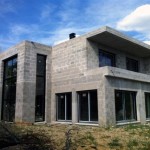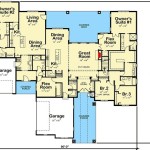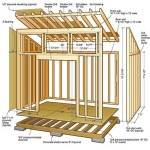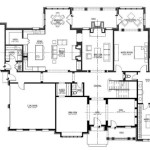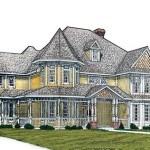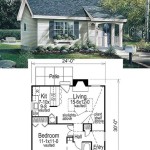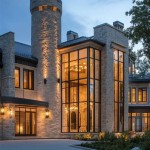The Farnsworth House, located in Plano, Illinois, is a significant example of modernist architecture designed by Ludwig Mies van der Rohe. Completed in 1951, it is renowned for its iconic glass-and-steel structure, which epitomizes the principles of minimalism and the “less is more” aesthetic.
The house serves as a private residence and is considered a masterpiece of modern architecture. Its design reflects Mies van der Rohe’s belief in the importance of open spaces, natural light, and the integration of architecture with the surrounding landscape. The Farnsworth House showcases the architect’s meticulous attention to detail and his commitment to creating spaces that are both functional and aesthetically pleasing.
In this article, we will delve into the history, design, and significance of the Farnsworth House. We will explore its iconic features, the challenges faced during its construction, and its influence on modern architecture.
The Farnsworth House is celebrated for its groundbreaking design and enduring influence on modern architecture. Here are nine significant points about this iconic structure:
- Glass-and-steel structure
- Minimalist aesthetic
- Open floor plan
- Emphasis on natural light
- Integration with landscape
- Designed by Ludwig Mies van der Rohe
- Completed in 1951
- National Historic Landmark
- Symbol of modernist architecture
These elements combine to create a timeless and influential work of architecture that continues to inspire and captivate.
Glass-and-steel structure
The Farnsworth House is renowned for its innovative use of a glass-and-steel structure, which is a defining characteristic of modernist architecture. This structure not only provides a visually striking appearance but also serves several functional purposes.
- Transparency and natural light
The extensive use of glass allows for an abundance of natural light to flood the interior spaces, creating a bright and airy atmosphere. This transparency also blurs the boundaries between the interior and exterior, bringing the surrounding landscape into the living space.
- Minimalism and simplicity
The glass-and-steel structure embodies the minimalist aesthetic of modernism. The clean lines, geometric shapes, and lack of ornamentation reflect Mies van der Rohe’s belief in “less is more.” This simplicity creates a sense of spaciousness and serenity.
- Structural strength and durability
Despite its delicate appearance, the glass-and-steel structure is remarkably strong and durable. The steel frame provides a sturdy support for the large glass panels, ensuring the stability of the house. This combination of materials allows for large open spaces without the need for additional support.
- Integration with nature
The glass-and-steel structure allows for a seamless connection between the house and its natural surroundings. The transparent walls offer unobstructed views of the Fox River and the surrounding landscape, creating a harmonious relationship between architecture and nature.
Overall, the glass-and-steel structure of the Farnsworth House is a testament to Mies van der Rohe’s architectural vision. It combines aesthetics, functionality, and durability, setting a new standard for modern architecture.
Minimalist aesthetic
The Farnsworth House exemplifies the minimalist aesthetic, a defining characteristic of modernist architecture. Mies van der Rohe believed in the power of simplicity and the elimination of unnecessary ornamentation. This approach is evident in every aspect of the house’s design, from its clean lines and geometric shapes to its restrained use of materials.
- Simplicity of form
The Farnsworth House is characterized by its simple, geometric forms. The rectangular shape of the house, the large expanses of glass, and the minimal use of interior walls create a sense of spaciousness and order. This simplicity of form is a hallmark of modernist architecture and reflects Mies van der Rohe’s belief that “less is more.”
- Lack of ornamentation
The Farnsworth House is devoid of any unnecessary ornamentation. Mies van der Rohe believed that ornamentation was superfluous and distracting, and he instead focused on the beauty of the materials themselves. The clean lines and unadorned surfaces of the house create a sense of elegance and sophistication.
- Emphasis on natural materials
Mies van der Rohe used natural materials such as glass, steel, and wood in the construction of the Farnsworth House. These materials are celebrated for their inherent beauty and durability, and they contribute to the overall minimalist aesthetic of the house. The use of natural materials also helps to create a connection between the house and its natural surroundings.
- Integration of indoor and outdoor spaces
The Farnsworth House is designed to seamlessly integrate indoor and outdoor spaces. The large expanses of glass and the open floor plan allow for a constant flow of natural light and fresh air. This integration of indoor and outdoor spaces is a key element of modernist architecture and reflects Mies van der Rohe’s belief that architecture should be in harmony with nature.
The minimalist aesthetic of the Farnsworth House is a testament to Mies van der Rohe’s architectural vision. By stripping away unnecessary ornamentation and focusing on the beauty of simple forms and natural materials, he created a timeless and iconic work of architecture that continues to inspire architects and designers today.
Open floor plan
The Farnsworth House is renowned for its open floor plan, which is a defining characteristic of modernist architecture. This type of floor plan eliminates traditional walls and partitions, creating a large, continuous space that flows seamlessly from one area to another.
In the Farnsworth House, the open floor plan is achieved through the use of a central core that houses the kitchen, bathroom, and utility spaces. This core divides the house into two main living areas: a living room on one side and a bedroom on the other. However, the core does not fully enclose these spaces, allowing for visual and spatial continuity throughout the house.
The open floor plan of the Farnsworth House offers several advantages. First, it creates a sense of spaciousness and openness. The lack of walls and partitions allows for natural light to penetrate deep into the house, creating a bright and airy atmosphere. Second, the open floor plan promotes a sense of flow and movement. The continuous space allows people to move freely and easily from one area to another, fostering a sense of connection and interaction.
Furthermore, the open floor plan allows for a closer connection to the surrounding landscape. The large expanses of glass and the lack of walls create a seamless transition between the interior and exterior spaces. This connection to nature is a key element of modernist architecture and is beautifully realized in the Farnsworth House.
Overall, the open floor plan of the Farnsworth House is a testament to Mies van der Rohe’s architectural vision. By eliminating traditional walls and creating a continuous, flowing space, he created a house that is both functional and aesthetically pleasing. The open floor plan remains a popular feature in modern architecture, as it offers a sense of spaciousness, openness, and connection to the surrounding environment.
Emphasis on natural light
The Farnsworth House is designed to maximize natural light, which is a key element of modernist architecture. Mies van der Rohe believed that natural light could create a sense of spaciousness, openness, and connection to the surrounding environment. He achieved this through the use of large expanses of glass and a carefully considered floor plan.
- Large expanses of glass
The Farnsworth House is characterized by its extensive use of glass, which allows for an abundance of natural light to flood the interior spaces. The large windows and glass walls provide unobstructed views of the surrounding landscape, creating a sense of openness and connection to nature. The transparency of the glass also blurs the boundaries between the interior and exterior, bringing the outside in.
- Open floor plan
The open floor plan of the Farnsworth House contributes to the emphasis on natural light. The lack of walls and partitions allows for natural light to penetrate deep into the house, creating a bright and airy atmosphere. The continuous space allows for a free flow of light, ensuring that even the interior areas of the house are well-lit.
- Strategic placement of windows
Mies van der Rohe carefully considered the placement of windows in the Farnsworth House to maximize natural light. The large windows are positioned to capture the morning sun and the afternoon light, providing a constant source of natural illumination throughout the day. The windows are also placed to frame specific views of the surrounding landscape, creating a sense of connection to the outdoors.
- Reflective surfaces
Mies van der Rohe also used reflective surfaces to enhance the natural light in the Farnsworth House. The white walls and ceilings reflect light, creating a brighter and more spacious atmosphere. The polished steel columns and beams also reflect light, adding to the overall brightness of the house.
The emphasis on natural light in the Farnsworth House creates a sense of harmony between the interior and exterior spaces. The abundance of natural light not only illuminates the house but also creates a connection to the surrounding landscape, blurring the boundaries between architecture and nature.
Integration with landscape
The Farnsworth House is renowned for its seamless integration with the surrounding landscape, which is a key element of modernist architecture. Mies van der Rohe believed that architecture should be in harmony with nature, and he designed the Farnsworth House to reflect this philosophy.
One of the most striking features of the Farnsworth House is its location. It is situated on a secluded lot overlooking the Fox River, surrounded by lush greenery. The house is positioned to take advantage of the natural beauty of its surroundings, with large windows and glass walls offering panoramic views of the river and the surrounding landscape.
The open floor plan of the Farnsworth House also contributes to its integration with the landscape. The lack of walls and partitions allows for a constant flow of natural light and fresh air, creating a sense of connection to the outdoors. The interior spaces seamlessly transition into the exterior spaces, blurring the boundaries between architecture and nature.
In addition to the physical integration with the landscape, the Farnsworth House also reflects the natural surroundings in its design. The use of natural materials such as wood and stone creates a sense of harmony between the house and its environment. The simple, geometric forms of the house echo the forms found in nature, further reinforcing the connection between architecture and landscape.
Overall, the integration with the landscape is one of the defining characteristics of the Farnsworth House. Mies van der Rohe’s careful consideration of the site, the open floor plan, and the use of natural materials create a house that is both visually stunning and deeply connected to its natural surroundings.
Designed by Ludwig Mies van der Rohe
The Farnsworth House was designed by Ludwig Mies van der Rohe, a German-American architect who is considered one of the pioneers of modern architecture. Mies van der Rohe was known for his minimalist approach and his belief in the importance of simplicity, clarity, and honesty in architecture.
Mies van der Rohe’s design for the Farnsworth House is a prime example of his minimalist aesthetic. The house is characterized by its clean lines, geometric forms, and lack of ornamentation. The exterior of the house is clad in glass and steel, which creates a sense of transparency and lightness. The interior of the house is equally, with an open floor plan and a focus on natural materials such as wood and stone.
Mies van der Rohe’s design for the Farnsworth House was also influenced by his belief in the importance of integrating architecture with nature. The house is situated on a secluded lot overlooking the Fox River, and the large windows and glass walls offer panoramic views of the surrounding landscape. The open floor plan of the house also allows for a constant flow of natural light and fresh air, creating a sense of connection to the outdoors.
The Farnsworth House is considered one of Mies van der Rohe’s most important works, and it is widely recognized as a masterpiece of modern architecture. The house has been designated a National Historic Landmark and is open to the public for tours.
Mies van der Rohe’s design for the Farnsworth House is a testament to his commitment to simplicity, clarity, and honesty in architecture. The house is a timeless masterpiece that continues to inspire architects and designers today.
Completed in 1951
The Farnsworth House was completed in 1951, after a two-year construction period. The house was designed by Ludwig Mies van der Rohe for Dr. Edith Farnsworth, a prominent Chicago nephrologist. The house was built on a secluded lot overlooking the Fox River in Plano, Illinois.
The construction of the Farnsworth House was a challenging undertaking. The house’s innovative design required the use of new materials and construction techniques. The steel frame of the house was prefabricated in Chicago and then shipped to the site. The glass panels were also prefabricated and then installed on site. The construction process was further complicated by the fact that the house is located in a flood plain. To protect the house from flooding, Mies van der Rohe designed a system of piers that elevate the house above the ground.
Despite the challenges, the Farnsworth House was completed on time and within budget. The house was immediately recognized as a masterpiece of modern architecture. It was featured in numerous publications and was visited by architects and designers from around the world.
The Farnsworth House is now considered one of the most important works of Mies van der Rohe. The house is a National Historic Landmark and is open to the public for tours.
The completion of the Farnsworth House in 1951 marked a significant milestone in the history of modern architecture. The house’s innovative design and construction techniques set a new standard for modern architecture. The Farnsworth House continues to inspire architects and designers today and is considered one of the most important works of the 20th century.
National Historic Landmark
The Farnsworth House was designated a National Historic Landmark in 2006. This designation is the highest level of recognition that can be bestowed on a historic property by the United States government. It is given to properties that are considered to be of exceptional importance to the nation’s history and culture.
The Farnsworth House was nominated for National Historic Landmark status because of its architectural significance. The house is a masterpiece of modern architecture and is considered to be one of the most important works of Ludwig Mies van der Rohe. The house’s innovative design and construction techniques set a new standard for modern architecture.
The Farnsworth House is also significant for its association with Dr. Edith Farnsworth, a prominent Chicago nephrologist. Farnsworth was a patron of the arts and a supporter of modern architecture. She commissioned Mies van der Rohe to design the Farnsworth House, and she lived in the house for many years.
The Farnsworth House is now owned by the National Trust for Historic Preservation. The house is open to the public for tours, and it is also used for educational programs and events.
The designation of the Farnsworth House as a National Historic Landmark is a testament to its importance to the nation’s history and culture. The house is a masterpiece of modern architecture and is associated with a significant figure in the history of medicine. The Farnsworth House is a reminder of the importance of preserving our architectural heritage.
Symbol of modernist architecture
The Farnsworth House is considered a symbol of modernist architecture for several reasons. First, it embodies the key principles of modernism, such as simplicity, clarity, and honesty in design. The house’s clean lines, geometric forms, and lack of ornamentation exemplify the modernist aesthetic.
Second, the Farnsworth House is a prime example of Mies van der Rohe’s commitment to integrating architecture with nature. The house is situated on a secluded lot overlooking the Fox River, and the large windows and glass walls offer panoramic views of the surrounding landscape. The open floor plan of the house also allows for a constant flow of natural light and fresh air, creating a sense of connection to the outdoors.
Third, the Farnsworth House was one of the first houses to be built using a steel frame and glass walls. This innovative construction technique allowed Mies van der Rohe to create a house that is both visually stunning and structurally sound. The Farnsworth House set a new standard for modern architecture and influenced the design of countless other houses.
Finally, the Farnsworth House has been widely published and exhibited, and it has been visited by architects and designers from around the world. The house has been featured in numerous books, magazines, and films, and it is considered one of the most important works of modern architecture.
The Farnsworth House is more than just a house; it is a symbol of the modernist movement in architecture. The house represents Mies van der Rohe’s commitment to simplicity, clarity, and honesty in design, and it exemplifies the integration of architecture with nature. The Farnsworth House is a masterpiece of modern architecture and continues to inspire architects and designers today.




![Farnsworth House, Plano, IL Ludwig Mies van der Rohe [4032×1960] r](https://i3.wp.com/i.redd.it/7ircbnqgf2h31.jpg)





Related Posts

